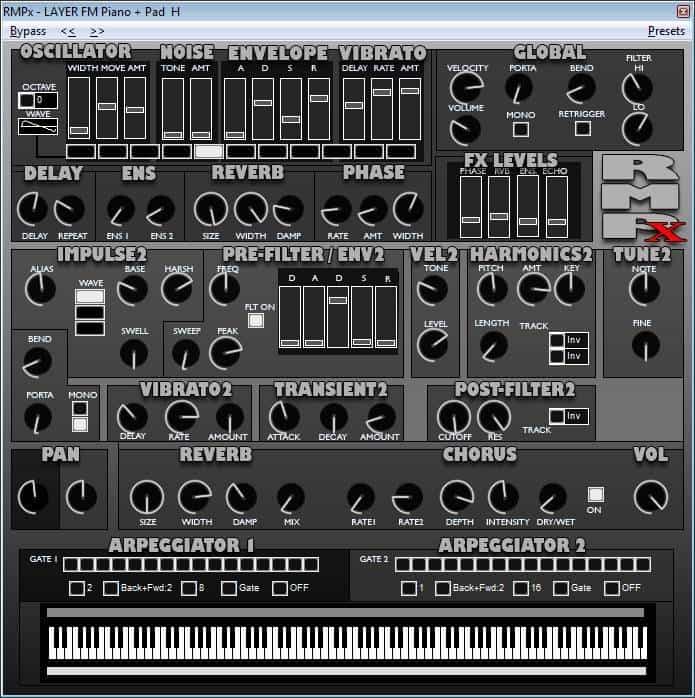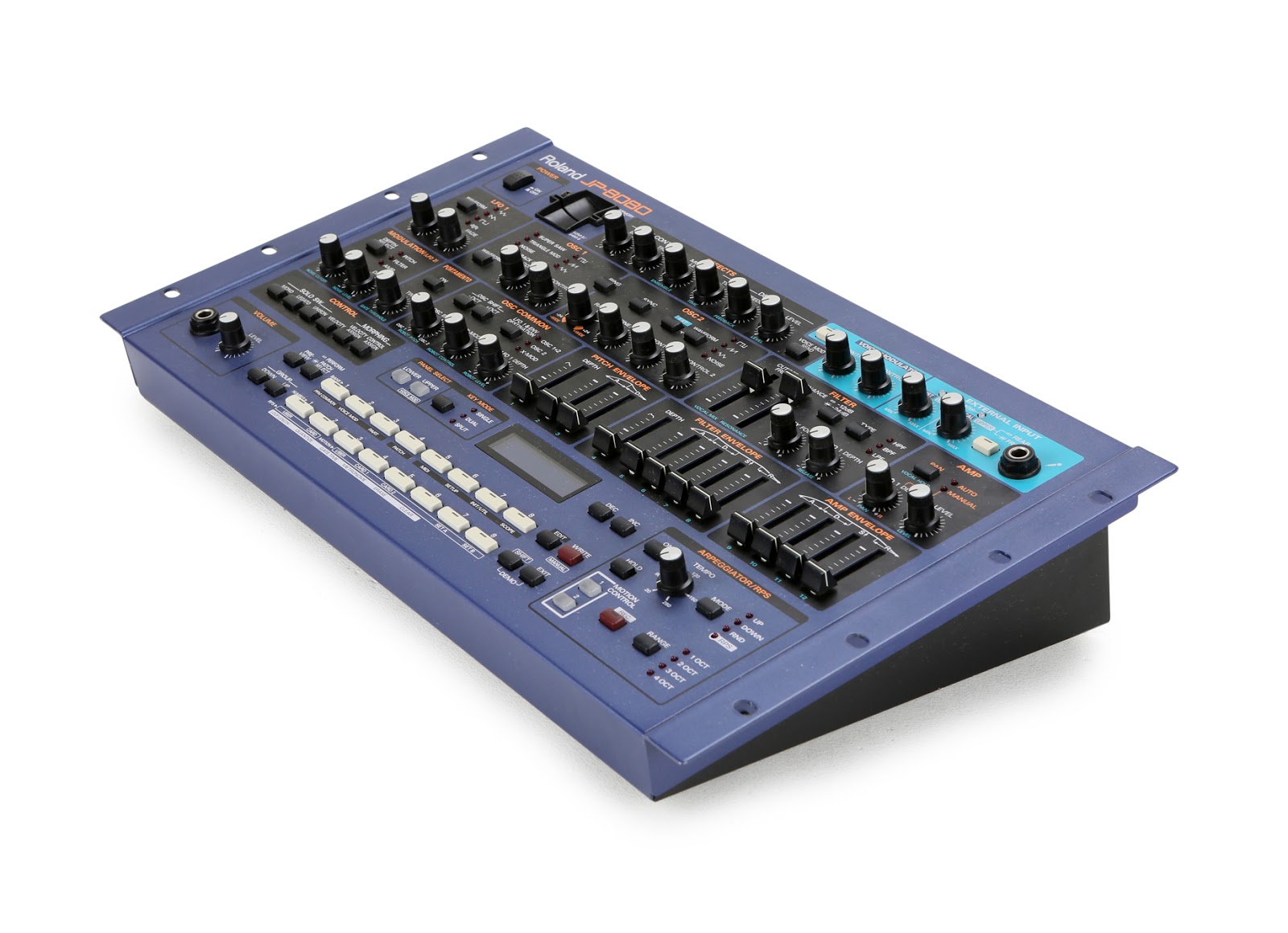A Virtual Analog synthesizer is all digital (or uses digital circuitry to control analog components). It emulates analog characteristics by implementing mathematical models of analog circuitry. Analog modeling is a type of physical modeling, which imitates electronic hardware. The Yamaha AN1x is a DSP-based analog modeling synthesizer (a.k.a. Virtual analog synthesizer), produced by Yamaha Corporation from 1997 to 1998, and was marketed as an 'analog physical modelling control synthesizer'. Oct 18, 2019 Calling something 'one of the most powerful music synthesizers ever built' is undoubtedly a bold claim, but it demonstrates the faith that Waldorf has in Kyra. Those who attended NAMM earlier this year could see a pre-production prototype of the Kyra virtual analog synthesizer, but Waldorf has now announced its availability. Mar 16, 2020 Retrologue 2 is a great-sounding analog synthesizer emulation with a three oscillators and a first-class set of filters, together which produce a wealth of inspiring sounds.
An analog (or analogue) synthesizer is a synthesizer that uses analog circuits and analog signals to generate sound electronically.
The earliest analog synthesizers in the 1920s and 1930s, such as the Trautonium, were built with a variety of vacuum-tube (thermionic valve) and electro-mechanical technologies. After the 1960s, analog synthesizers were built using operational amplifier (op-amp) integrated circuits, and used potentiometers (pots, or variable resistors) to adjust the sound parameters. Analog synthesizers also use low-pass filters and high-pass filters to modify the sound. While 1960s-era analog synthesizers such as the Moog used a number of independent electronic modules connected by patch cables, later analog synthesizers such as the Minimoog integrated them into single units, eliminating patch cords in favour of integrated signal routing systems.
History[edit]
1900-1920[edit]
The earliest mention of a 'synthetic harmoniser' using electricity appears to be in 1906, created by the Scottish physicist James Robert MilneFRSE (d.1961).[1]
1920s–1950s[edit]

M-audio Venom Virtual Analog Synthesizer
The earliest synthesizers used a variety of thermionic-valve (vacuum tube) and electro-mechanical technologies. While some electric instruments were produced in bulk, such as Georges Jenny's Ondioline, the Hammond organ, and the Trautonium, many of these would not be considered synthesizers by the standards of later instruments. However, some individual studios and instruments achieved a high level of sophistication, such as the Trautonium of Oskar Sala, the Electronium of Raymond Scott, and the ANS synthesizer of Evgeny Murzin.[2] Another notable early instrument is the Hammond Novachord, first produced in 1938, which had many of the same features as later analog synthesizers.
1960s–1970s[edit]
Early analog synthesizers used technology from electronic analog computers and laboratory test equipment. They were generally 'modular' synthesizers, consisting of a number of independent electronic modules connected by patch cables into a patchbay that resembled the jackfields used by 1940s-era telephone operators. Synthesizer modules in early analog synthesizers included voltage-controlled oscillators (VCOs), voltage-controlled filters (VCFs), and voltage-controlled amplifiers (VCAs). The control voltage varied frequency in VCOs and VCFs, and attenuation (gain) in VCAs. Additionally, they used envelope generators, low-frequency oscillators, and ring modulators.Some synthesizers also had effects devices, such as reverb units, or tools such as sequencers or sound mixers. Because many of these modules took input sound signals and processed them, an analog synthesizer could be used both as a sound-generating and sound-processing system.

Famous modular synthesizer manufacturers included Buchla & Associates, Moog Music, ARP Instruments, Inc., Serge Modular Music Systems, and Electronic Music Studios. Moog established standards recognized worldwide for control interfacing on analog synthesizers, using an exponential 1-volt-per-octave pitch control and a separate pulse triggering signal. These control signals were routed using the same types of connectors and cables that were used for routing the synthesized sound signals. A specialized form of analog synthesizer is the analog vocoder, based on equipment developed for speech synthesis. Vocoders are often used to make a sound that resembles a musical instrument talking or singing.
Make Analog Synthesizers
Patch cords were expensive, could be damaged by use (creating hard-to-find intermittent faults), and made complex patches difficult and time-consuming to recreate. Thus, later analog synthesizers used the same building blocks, but integrated them into single units, eliminating patch cords in favour of integrated signal routing systems. The most popular of these was the Minimoog. In 1970, Moog designed an innovative synthesizer with a built-in keyboard and without modular design - the analog circuits were retained, but made interconnectable with switches in a simplified arrangement called 'normalization'. Though less flexible than a modular design, normalization made the instrument more portable and easier to use. This first pre-patched synthesizer, the Minimoog, became highly popular, with over 12,000 units sold.[3] The Minimoog also influenced the design of nearly all subsequent synthesizers, with integrated keyboard, pitch wheel and modulation wheel, and a VCO->VCF->VCA signal flow. In the 1970s, miniaturized solid-state components let manufacturers produce self-contained, portable instruments, which musicians soon began to use in live performances. Electronic synthesizers quickly become a standard part of the popular-music repertoire. The first movie to use music made with a (Moog) synthesizer was the James Bond film On Her Majesty's Secret Service in 1969. After the release of the film, composers produced a large number of movie soundtracks that featured synthesizers.
Virtual Analog Synthesizer
Notable makers of all-in-one analog synthesizers included Moog, ARP, Roland, Korg and Yamaha. Because of the complexity of generating even a single note using analog synthesis, most synthesizers remained monophonic. Polyphonic analog synthesizers featured limited polyphony, typically supporting four voices. Oberheim was a notable manufacturer of analog polyphonic synthesizers. The Polymoog was an attempt to create a truly polyphonic analog synthesizer, with sound generation circuitry for every key on the keyboard. However, its architecture resembled an electronic organ more than a traditional analog synthesizer, and the Polymoog was not widely imitated.
In 1978, the first microprocessor-controlled analog synthesizers were created by Sequential Circuits. These used microprocessors for system control and control voltage generation, including envelope trigger generation, but the main sound generating path remained analog. The MIDI interface standard was developed for these systems. This generation of synthesizers often featured six or eight voice polyphony. Also during this period, a number of analog/digital hybrid synthesizers were introduced, which replaced certain sound-producing functions with digital equivalents, for example the digital oscillators in synthesizers like the Korg DW-8000 (which played back PCM samples of various waveforms) and the Kawai K5 (waveforms constructed via additive synthesis). With the falling cost of microprocessors, this architecture became the standard architecture for high-end analog synthesizers.
1980s–present[edit]
During the middle to late 1980s, digital synthesizers and samplers largely replaced analog synthesizers. By the early 1990s, however, musicians from the techno, rave and DJ scenes who wanted to produce electronic music but lacked the budget for large digital systems created a market for the then cheap second hand analog equipment. This increased demand for analog synthesizers towards the mid-1990s, as larger numbers of musicians gradually rediscovered the analog qualities. As a result, sounds associated with analog synths became popular again.
Over time, this increased demand for used units (such as the 1980 Roland TR-808 drum machine and Roland TB-303 bass synthesizer). Late 1970s-era drum machines used tuned resonance voice circuits for pitched drum sounds and shaped white noise for others. The TR-808 improves on these designs, by using detuned square wave oscillators (for the cow bell and cymbal sounds) and analogue reverberation (for the handclap sound). The demand for the analog synth sound led to development of a variety of analog modeling synthesizers—which emulate analog VCOs and VCFs using samples, software, or specialized digital circuitry, and the construction of new analog keyboard synths such as the Alesis Andromeda, Prophet '08, and Little Phatty, as well as semi-modular and modular units.
The lapse of patents in recent years, such as for the Moog synthesizer transistor ladder filter, has spurred a return of DIY and kit synthesizer modules, as well as an increase in the number of commercial companies selling analog modules. Reverse engineering has also revealed the secrets of some synthesizer components, such as those from ARP Instruments, Inc. In addition, despite the widespread availability during the 2000s of relatively inexpensive digital synthesizers that offered complex synthesis algorithms and envelopes, some musicians are attracted to the sounds of monophonic and polyphonic analog synths. While some musicians embrace analog synthesizers as preferable, others counter that analog and digital synthesis simply represent different sonic generation processes that both reproduce characteristics the other misses.[4] Another factor considered to have increased use of analog synths since the 1990s is weariness with the complex screen-based navigation systems of digital synths, with the 'hands-on', practical controls of analog synths—potentiometer knobs, faders, and other features—offering a strong appeal.[citation needed]
Use in the modern music scene[edit]
What Is A Virtual Analog Synthesizer For Computer
Usage in EDM track composition and performance[edit]
Unlike in the past, electronic music production now centers more around the use of MIDI controlled software synths (VST plugins for example). Because of this advancement the industry has for a while turned its attention away from analog synthesizers to digital and virtual synths. The nature of that main focus on digital has resulted in the lack of investment in the study of experimental methods of audio synthesis and sound design from a physical point of view.[5]
When production software was first developed, producers were very excited to work with it because of all various effects that were available. After a while, the sole use of the software alone didn't give some producers the same feeling as using a physical instrument, prompting some to draw toward using analog synthesizers.[6]
Due to technology advancements, analog synthesizers are now being developed to integrate with production software (such as the rig that is used by EDM artist Deadmau5), thus both re-sparking interest from producers and providing a market for suppliers. This allows for features such as MIDI note and automation control from within the users Digital Audio Workstation.[7]
Best Virtual Analog Synthesizer
Modern EDM star Deadmau5 (Joel Zimmerman), used analog synthesizers in his track 'For Lack of a Better Name'. Zimmerman, noted that there is a quality difference between digital and analog. He commented that, while a passive listener may not hear a difference, he believes that true analog provides a more subconsciously appealing tonal quality.[8]
Even more than the tonality though, Zimmerman values analog for its hands-on structure and physical controls because of the advanced degree of precision he can get while doing sound design because of the nature of the transistors.[9]
What Is A Virtual Analog Synthesizer Free
References[edit]
- ^Proceedings of the Royal Society of Edinburgh 1906
- ^1957 Evgeny Murzin ANS synthesizer, Kom. Musik, September 6, 2006, retrieved 15 February 2006
- ^1970 Robert Moog Moog Music Minimoog Synthesizer, Mix Magazine, September 1, 2006, archived from the original on 28 March 2008, retrieved 10 April 2008
- ^Kirn, Peter (2013-07-29). 'Video Explains Why Difference Between Analog, Digital Isn't What Most People Think'. Create Digital Media, GmbH. Retrieved 2015-05-24.
- ^'Portability and the Limits of MIDI'. ccrma.stanford.edu. Retrieved 2019-02-20.
- ^Parish, Matt (May 2014). 'Inside the Analog Resurgence'. Musical Merchandise Review. 173: 31 – via ProQuest.
- ^Parish, Matt (March 2014). 'Inside the Analog Resurgence'. Musical Merchandise Review. 173: 32 – via ProQuest.
- ^Fortner, Stephen (April 2010). 'deadmau5: Keeping 'Em Guessing'. Keyboard. 36: 19 – via ProQuest.
- ^Micallef, Ken (December 2009). 'REVENGE OF THE NERD'. EQ. 20: 32 – via ProQuest.
External links[edit]
- Modular Analog Synthesizers Return! – a discussion of modern modular equipment with links to major manufacturers.
- Comparison table of modern analog synthesizers - a freely editable document, in construction.